It’s hard to see most cancers; you have to look inside the body (usually) to see what’s killing it.
Have a look under the hood of a new vehicle if you want to see a similar kind of cancer – and it’s metastasizing. Here’s one example of many: The 2024 Lexus GX550, which is a larger (three row) version of the 2024 Toyota Land Cruiser. It’s even heavier (5,467 lbs.) than the slightly smaller Land Cruiser (5,038 lbs.) but all it’s got under its hood is 3.4 liters of V6.
The previous Lexus GX460 – which weighed several hundred pounds less (5,126 lbs.) than the new GX550 – came standard with a 4.6 liter V8.
It’s interesting to point out here the the fact that the GX460’s name corresponded with what was under its hood; i.e., “460” indicated 4.6 liters. So how come the GX460’s replacement – the GX550 isn’t called the GX340?
It’s obvious why.
Lexus doesn’t want to make plain that there’s less under the hood than there used to be. Just the same as Mercedes still refers to the four cylinder-powered E-Class sedan as the E-350, even though all it has under its hood is 2.0 liters. An “E200” sounds less substantial than “E350,” which used to mean you got a 3.5 liter V6 for the $50k-plus you just spent.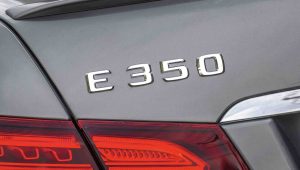
Now, a reader has complained that I am being unfair in pointing out this getting less for more (in terms of what it costs).
He says that I have implied “it’s some sort of conspiracy by auto makers to deprive us of engine power.” No such thing was ever said – or written – by me. What I did say (and have written) is that the federal regulatory apparat is pushing the vehicle manufacturers to put smaller engines in the vehicles they offer for sale. It is being done via regulations pertaining to fuel economy and “emissions” that larger engines have greater difficulty complying with.
Smaller engines help with compliance because they are smaller. A four cylinder engine that displaces 2.0 liters normally processes less air – and burns less fuel – because it has less cylinder volume than a 3.0 liter six cylinder engine. It thus more readily complies with federal regs that demand higher gas mileage – and lower “emissions” of gasses, especially the gas that isn’t a pollutant (CO2).
But the four cylinder engine also makes less power – precisely because it is smaller and cannot process as much air/fuel (which is how a gas or diesel engine makes power). Less power makes car buyers less happy; more finely, it makes them less willing to pay more to get less.
The solution – from the point of view of the vehicle manufacturers – is to turbocharge the small engine so that makes power equivalent to the larger engine when the vehicle’s owner wants his vehicle to accelerate. The turbo boosts the small engine – literally forcing more air through it, so that more power is produced by it. This satisfies the vehicle’s owner; more finely, it makes it so that the owner is willing to accept less engine under the hood.
It makes him feel there is the same amount of engine under the hood.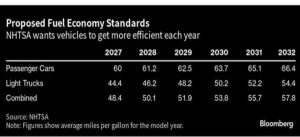
So, it’s not a “conspiracy by auto makers to deprive us of engine power,” as averred by the reader who took issue with what I have said and written. Far from it, in fact. It is a desperate attempt to maintain the power that buyers expect in the face of government regulations that are – effectively – forcing larger engines that don’t need turbo-boosting to make adequate power off the market.
At the very least, to make engines that aren’t small fours luxury engines, so as to re-establish what bigger engines once were. So as to re-establish the distinction that once attended being among the few who could afford such a luxury. The very rich will still be able to afford V8 (and six cylinder) powered vehicles. The point is to make sure most of us can’t. It is not enough that they have nice things. What matters most is that we can’t have them. In this regard, take note of Michelle Obama – who along with her husband owns a vacation estate on Martha’s Vineyard that almost none of us will ever be able to afford – lecturing us about paying our “fair share.”
My reader goes on to sing the virtues of small engines that make the power of larger engines and I have never disputed this fact. It is nothing shy of an engineering miracle that little four cylinder engines now routinely make as much or even more power than much larger V8s used to make.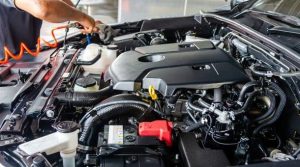
But it is entirely beside the point.
Why are engines getting smaller and smaller? It is not because this is the way to go to make more power. It is because it is the only way to achieve compliance while still delivering adequate power.
And what will happen when it gets harder for even small, four cylinder engines to achieve compliance?
Why, they’ll get even smaller!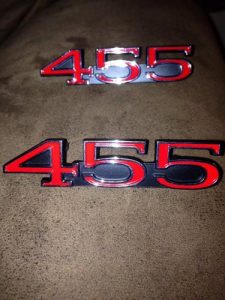
Some already are. For example, the 2024 Buick Envista I test drove a few months ago (my review is here) comes standard with a three cylinder engine – just 1.2 liters, which makes a 2.0 liter four cylinder engine seem almost V8-like. Naturally, it is turbocharged – because it has to be. Because if it weren’t boosted, 1.2 liters would not make enough power to adequately propel a two-ton (4,255 lb.) mid-sized vehicle like the Envista. In the halycon past, a vehicle as heavy as the Envista would have been powered by at least a V8 in the size range of 5.7 liters.
So why is this Buick powered by an engine not much larger than many motorcycle engines? Because of compliance.
Now, my reader may not have connected the dots, so allow me. The same compliance pressure that led to four cylinder engines being put in 5,000-plus-pound SUVs is going to lead, in short order, to no engines in not-just-SUVs.
It is the point of the thing, you see – even if some don’t.
. . .
If you like what you’ve found here please consider supporting EPautos.
We depend on you to keep the wheels turning!
Our donate button is here.
If you prefer not to use PayPal, our mailing address is:
EPautos
721 Hummingbird Lane SE
Copper Hill, VA 24079
PS: Get an EPautos magnet or sticker or coaster in return for a $20 or more one-time donation or a $10 or more monthly recurring donation. (Please be sure to tell us you want a magnet or sticker or coaster – and also, provide an address, so we know where to mail the thing!)
If you like items like the Baaaaaa! baseball cap pictured below, you can find that and more at the EPautos store!





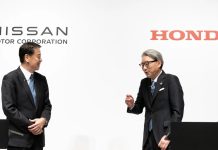






That EcoBoost belongs in that classic truck like a butch haircut on Farrah Fawcett.
And its 10-speed automatic is like Farrah having three breasts.
Just give me one thing
That I can hold on to
— Bonnie Raitt, Angel From Montgomery
Well-said, Strait –
I feel the same whenever I see a classic vehicle with a “modern” engine. Because what I’m looking at is a shell. It is like a taxidermy project.
The comments here have bounced me all over the place since my read and original thoughts on the post. My DD service van is a Benz Metris with 150K mile turbo 2.0. Would a 6 be preferable? Hell yes! The turbo lag in my toy Teutonic hot rod is fine. It can be annoying in the DD. With nothing more than routine maintenance it is running strong. Still, it is a great van.
That said, I am reminded of an article I read years ago regarding marine diesel engines. I.m in the industry, not diesel related. The article stated engine life was related to gallons between overhaul, not time. Run time and miles being related of course. I did the math on expected time between overhauls and fuel burn using naturally aspirated and turbo/supercharged marine diesel engines (2 stroke Detroits, most common at the time). The total fuel burn would be about the same. The low HP naturals would just get a considerably larger amount of hours.
Since I am on the older side, this is right at the early stages of microprocessors running everything. Including reporting your CO2 emissions.
The overweight vehicles (also mandatory by the government) makes the problem even worse. Most vehicles are overweight compared with vehicles from thirty years ago, most a good 5-600 pounds more. Weight, most makers would have left off, had they been allowed too.
Had the government only required the extra weight, the makers would have probably been UPSIZING engine sizes recently, not making them smaller. Putting that turbo on the V8 not that little 4. Or making more V10’s etc.
There are no advantages for buyers with these small engines. Not a one, just all the costs. The cost of complexity, the cost of being more expensive just to buy it, the higher cost of more repairs.
The gas savings would have to be huge to make it worth it. But alas you don’t even get that.
“There are no advantages for buyers with these small engines. Not a one, just all the costs. The cost of complexity, the cost of being more expensive just to buy it, the higher cost of more repairs.” -richb
Of course, that’s the point of the mandate. Win, win, win for everybody, well except the customer that has no choice or say in the matter. This may explain why we’ve seen no post-Chevron challenges yet. Turns out the manufacturers weren’t just being compliance pussies; they actually like the mandates.
That’s absolutely correct. I can’t imagine that every company likes the mandates, though. There are plenty of foreign ones building cars that we could import into the states. Waiting for that to happen.
I’m glad to see this point about engine sizing being hammered on this website. I had little idea what the EPA and other buracracies were up to until several years ago. They have quietly and methodically tightened the standards before many of us figured out we were having the rug pulled out from under us.
>nothing shy of an engineering miracle
No miracles involved. Just science and engineering.
But, as the late Arthur C. Clarke liked to put it, any sufficiently advanced technology appears to be “magic” to those who do not understand it.
Back in the early days of automobiles, engines with enormous displacements were built, such as the 1917 Fiat Botafogo Special, a race car which displaced 21.7 liters.
https://www.popularmechanics.com/cars/a7997/the-1917-fiat-botafogo-special-and-its-wwi-aircraft-engine-11992701/
Chain drive, 4 forward speeds, with an 1800 RPM redline, it was capable of 320 HP and 146 MPH. All of which was outstanding for its day. Not so much by modern standards. Compression ratio was 4.5, and the specific output was 320/21.7 = 14.75 HP/liter
Converting to U.S. customary unit of volume, 21.7 liter = 1324 cubic inches.
Thus, the specific output = 320HP/1324 in^3 = 0.24 HP/in^3
Fuel economy? Well, it carried a 50 gallon fuel tank, so take a wild guess.
By comparison, the L76 327 ci in a 1964 Corvette was rated at 365HP w/ fuel injection, for a specific output of 365HP/327 in^3 = 1.12 HP/in^3. This was a normally aspirated engine, i.e. not supercharged or turbocharged.
To vastly increase the specific output, it is necessary to pack more fuel and air into the cylinders, which generally involves either a belt driven supercharger or an exhaust gas driven turbocharger, which effectively raises the compression ratio of the fuel/air mixture.
Belt driven superchargers were first used, such as this one:
https://nelsonracingengines.com/products/nre-roots-blown-mopar-hemi-572
>ROOTS BLOWN MOPAR HEMI 572
>1050 hp on Pump gas
which works out to
1050/572 = 1.84 HP/in^3
Turbochargers are now routine for many applications, but required more engineering research and development to make them serviceable, so came into widespread use later than superchargers. From a theoretical engineering point of view, a turbocharger is unquestionably superior to a supercharger. Why? Because the belt drive for a supercharger draws power from the engine shaft, meaning it reduces engine output, whereas a turbocharger captures waste heat and uses it to do useful work, thus increasing the thermal efficiency of the engine.
The price you pay, in either instance, is a) increased mechanical complexity, and b) higher stress on the engine components. Nothing comes for free in this world. TANSTAAFL, as they say.
>Turbochargers are now routine for many applications
Here is a turbocharged marine diesel, the Wärtsilä RT-flex96C
https://www.zmescience.com/feature-post/technology-articles/engineering/biggest-most-poweful-engine-world/
> In 2006, the Wärtsilä RT-flex96C engine was installed and finally set sail on the Emma Mærsk, a cargo ship that can carry 11,000 20-foot shipping containers at a breakneck speed of 31 knots, whereas most other ships in its class typically cruise with 20 knots.
‘Turbochargers are now routine for many applications, but required more engineering research and development to make them serviceable.’ — Adi Heidler
To your excellent summary, I would add specifically, advances in materials. From an essay by Jack Kane:
‘A turbocharger turbine lives in a terribly hostile environment. The turbine is driven by exhaust gasses that can exceed 1875°F (1025°C) and which are very corrosive. Exhaust valves experience those same corrosive, high-temperature gasses, but … they reject a large amount of heat into the coolant through the valve seats and stems.
‘The turbine wheel, however, lives in a continuous, high-velocity jet of those gasses. Further, the rotor system on many turbochargers operates well in excess of 100,000 RPM, and some approach 150,000 RPM. That imposes huge tensile loads from the centrifugal forces, as well as bending and vibratory loads. That environment requires the use of nickel-based superalloys for the turbine wheels.’
http://www.epi-eng.com/piston_engine_technology/turbocharger_technology.htm
Then you’ve got — oh, my! — the poor bearings:
‘If the engine is shut down immediately following a run at high power output, the turbine and turbine housing temperatures are toward their upper limits, and suddenly all gas flow through the turbine stops and all oil flow through the center housing stops. All that heat must go somewhere, and an easy path is into the center housing. The resulting temperatures can easily cook the oil to a solid with potentially disastrous results on the next run.
‘The centrifugal force at very high speeds can cause steel balls to lift off the inner race, and to skid on the inner race during acceleration. To combat that issue, some manufacturers have switched over to bearings having ceramic balls, and others are moving in that direction. Ceramic ball bearings are also reported to be more resistant to damage from high temperatures.’
No doubt it’s exciting to push the outer limits of materials capabilities. Whether you want such a highly-stressed component in your daily driver is another issue. If it fails, replacement could easily run $2,500 or more.
@ Jim H
[vox Mr. Spock]
Fascinating, Captain.
[/Spock]
🙂
>If it fails, replacement could easily run $2,500 or more.
Which illustrates the principle that all the engine components must be designed as a system, in order to withstand the anticipated loads. Bolting a turbocharger onto an engine which was designed for normally aspirated operation likely courts disaster.
RTFM is also highly recommended. My brother’s late ex-wife, or one of her ditzy friends, poured DEF
https://en.wikipedia.org/wiki/Diesel_exhaust_fluid
into the fuel tank of “her” Dodge Ram pickup. Scratch one Cummins diesel engine. Price: $12,000.
>Whether you want such a highly-stressed component in your daily driver is another issue.
Some people do. 🙂
https://official.bankspower.com/about-banks-power/gale-banks-biography/
“From a theoretical engineering point of view, a turbocharger is unquestionably superior to a supercharger.”
Although, from an aesthetic point of view, there’s nothing cooler than a belt driven supercharger poking out from a hole cut in the hood! Turbos, with all of their piping and valves make an engine bay ugly in my opinion.
>there’s nothing cooler than a belt driven supercharger poking out from a hole cut in the hood!
Classic hot rod, a.k.a. “automotive work of art.” 🙂
Hell, even if you could conceal the blower (NBL) you *would* hear it whine. 🙂 Couple that to a street Hemi, and the car will positively *HOWL*. 🙂
More like high blood pressure. Everything seems fine, until you have a stroke.
Sadly none of these engines will make it to 100k miles, between the added stress of turbo boost kicking in more often the smaller the engine and the stop/start idiocy of ASS dropping oil pressure every time it cycles the “saving” a few bucks for gas is far outweighed by the cost of replacing the car way sooner than normal.
There is hope, Eric.
Engineering and sales realities are forcing automakers to adjust their future plans.
EV’s aren’t selling well anymore. The buyers who wanted them have them, and lots of them are now buying their second EV to replace their first, but far fewer new people are buying because of the price and the limitations, so companies are investing into combustion engines again. It started with Daimler, but others are now following suit.
Second, the emissions rules are written by morons who don’t understand engineering, and who think that engines emit emissions because automakers are evil and are doing it on purpose. To them, “cleaning up” engines means changing a number on a piece of paper.
Enter Germany, again. The German economy is an auto industry with a government attached. When the auto industry suffers, things change, and they’re starting to change. There are still lots of “greens” who want to ban fast driving, or put a speed limit on the autobahn for efficiency reasons, but this is going nowhere.
My suspicion is that these emissions rules will be softened a bit. They’re not going away because the idiots will spin this as “allowing pollution”, but the industries are starting to push back because it’s become an existential issue now. Idiot automotive CEO’s were willing to play along as it seemed they could comply and make more money too.
An ideal gasoline, one which is as clean as it possibly could get, would emit 20 lb of CO2 for each gallon (8 lb) of gasoline it burns, and emit no nitrous oxides. That’s chemistry, there’s no changing this. Gasoline engines are basically here today for most of their duty cycle. Porsche just announced a 1.0 lambda engine, meaning it’ll always be at that perfect stoichiometric ratio in all conditions. It is not possible to do better, even theoretically. So, if that engine gets banned, we’re done, but it’s going to be a fight.
I’m required to go to California about once a month. Cant imagine driving one of these. The I-10 west of the state line, from Quartzsite to Blythe gets pretty spicy. Its a straight shot for miles, two lanes, with few oinkers in sight. The traffic flows at about 90-95MPH. God forbid you get behind some clover. They’re usually doing 65-70 in the left lane, with a long line of slower vehicles and trucks on the right. Power, above and beyond what little clown engines can provide is required. It is the only thing that settles issues non-violently, keeping them from escalating into full on road rage.
Giving us less for more has become the failed states answer to everything. Monetary debasement has trickled down into every aspect of our world. So much so, its becoming visible to even the average lard-ass like myself. In the store, the only butter thats reasonably priced now is the ‘European style.’ It comes in a convenient 12.6 ounce size box.
The exhorbeftent privilege our country enjoys through the good fortune of timing, and geography is being quickly frittered away. Dollah Dollah Bill Yo is being slaked like Kamila on her knees inside Willie Browns office. While the whole world waits outside for their 0.02 cents worth, the line stretched down the hall, like the starving boa constrictor that is her neck. Goodbye Dollar Bill, it was nice to know ya.
Falls in line with every other insane thing this society is doing. For everyone’s information Armstrong has a reasonable article on property theft humorously called property taxes. Seems even he thinks they will try to tax folks on inflated property values. Here in ‘free’ Floriduh they have tripled property taxes by din of assessment. You vill ownz nuttin and they vill be happy.
https://www.armstrongeconomics.com/world-news/taxes/property-taxes-and-taxing-you-on-unrealized-gains/
The really sad part is these small engines could be put to good use in a smaller car. The boost could even be turned down to increase reliability. If these tiny boosted or hybrid assisted drivetrains were installed in a lean chassis like a 90’s hatch or mid size sedan they’d have terrific fuel economy and performance. This is how “we” should be fighting “climate change” if that was really the goal. I’m all for resource conservation but these overweight rube goldberg vehicles are the opposite of that. Gimme a geo metro with some tiny radio flyer wheels and modern turbo 3 and watch me pass (almost) every gas station having a hoot of a time.
Forgot to add: Ecoboost into vintage f100
https://m.youtube.com/watch?v=Q19apE4fd6M&pp=ygUNZWNvYm9vc3Qgc3dhcA%3D%3D
Wonder why the owner wanted to put a 10-speed automatic into a classic 1960s pickup?
I’m guessing it was just too difficult to reprogram the engine control computer to handle a more era-appropriate transmission.
So he ended up with an anachronistic chimera — kind of like an old black-and-photo of Frank Roosevelt, with a cigarette holder in one hand and an iPhone in the other.
There is no substitute for cubic inches.
Finagles law: you cannot beat cubic money. Every hot rodder knows it.
The saying is “there’s no replacement for displacement”.
“Now, a reader has complained that I am being unfair in pointing out this getting less for more (in terms of what it costs).”
Which simply proves how intentionally ignorant some people choose to be.
This is the same type of stooge that lectured us about how masks ”work” and how the “vaccine” wasn’t forced onto anyone.
Jay Leno speaks of this when talking about EVs. “We have to have EVs so that we can continue to have antiques.” No mention of just how expensive it will become to refine gasoline if no one is using it. It will probably be more expensive than JET-A, which will also become a fuel for the elites after the airlines are finally cut loose from their protected status, sacrificed for the mother Gaia. Maybe those gay flight attendants can get work on the high speed rail once it’s completed in 2050… 60… 65… 75… 2100.
You get a small engine that blows up after 100K. The rich and government connected still get their V8s (and turbines if you’re “defending” the homeland). They do have to tithe for their sins with freshly printed greenbacks (indulgences), so I guess they pay some price. Who knows, maybe they’ll even go slumming once in a while and rent an EV -just make sure the selfie light is just right when you post it to the soc-nets, for the children!
The problem with Leno is that, although he seems like an affable guy, he’s a midwit and a bootlicker. That why he says stupid things like “We have to have EVs so that we can continue to have antiques.”
This kind of shit is no different from “we have to lock-down for 15 days to stop the spread,” “we have to vaxx so that society can reopen” or “we have to wear masks to protect [insert a sympathetic group here].”
Hey Leno, who the fuck is “we?”
The bureaucrats would love to price us back to the days where the rich had carriages and the poor walked.
This is their ideal world.
Though, they would allow us to take public transit.
Atleast there are no mean tweets under the hood.
Hi Steve,
If Trump would act the part of an adult, it would make for a wonderful contrast with the childishness of the Left. His base loves him. But he cannot win with just his base voting for him. He must have a margin so wide that his winning cannot be in doubt. A key toward that end is not giving the “media” the ammo to present him as an obnoxious oaf. Be serious – and it’s much harder to do that.
Suppose we can use the method that modified tractor pullers employ: multiple engines.
https://www.youtube.com/watch?v=UAGnthNQvYc
2 four bangers would give us 8 cylinders that we used to enjoy.
I know I’m being snarky. But it’s like Limbaugh used to say: illustrate absurdity by being absurd (or something like that).
It’s telling that it’s the size of the air pump and not fuel efficiency, because it’s hardly better in any of these turbo 4s. Not significantly anyway.
Beyond stupid. CO2 is plant food.
It’s about control and wealth redistribution. Oh, I’m sure there are some zealots that think they’re saving the planet, but anything western countries do is dwarfed by the new coal powerplants going up all over Asia and India. (And more power to them! It’s smart) But it’s the west that has to pay.
These bureaucrats are reprehensible lizard people. Lol
They would be smarter and money ahead to put up nuke plants. The Chinese with their free-er country have developed some amazing new designs free of GE’s 70 year old designs secured by government rules and propaganda.
follow the money. it’s about material cost. EV’s save even more, along with far less labor.
Beyond that, it’s who owns and invests in the companies providing these things. Who profits is always the tell.
‘It’s hard to see most cancers’ — eric
Our collective cancer is social. It was on vivid display in the DemonRat convention. You can read about it every day in the Lügenpresse [‘At Least 9 Killed as Israel Begins Major Military Operation in West Bank’ — NY Slimes, 28 August]
What ails our vehicles, under the tutelage of NHTSA and EPA charlatans, is sarcopenia — a gradual loss of muscle mass, strength and function. Engines are the vehicle’s muscle. They are shrinking drastically, pathologically, beneath their ugly-duckling zoot suits of black plastic ductwork.
Sure, our twisted automotive quack doctors can administer a risky injection of potent turbo boost, to perk up these failing-to-thrive examples of the mechanized halt and lame. But at what long-term cost?
Okay (okay, okay, okay)
Just a little pinprick
There’ll be no more
But you may feel a little sick
Can you stand up?
I do believe it’s working, good
That’ll keep you going through the shitshow
Come on, it’s time to go
— Pink Floyd, Comfortably Numb
Remember when car companies used to brag about how long their cars lasted? 20 years was an incredible amount of time for a car to last if you think about. If one car lasts twice as long as a competing make doesn’t that mean the “pollution” from manufacturing it is half as much?
From what I’m seeing with the new cars I can’t see how they would last 10 years before they’re not cost effective to repair. Things like 10 speed transmissions, 1.2 liter engines in a SUV, 12 airbags that all seem to go off in a very minor accident, you name it there is no way these things can last.
But as bad as these cars are a least they don’t self immolate like the EVs’ do.
In the spirit of VW Cheating I would ask, does the small turbo 4 pass the emissions test when the turbo is at its maximum? If not, ban turbos.
Logical next step, right?
I know, don’t give our overlords any more ideas.
Yes, they’ll come up with a slogan like “Isn’t it finally time to put an end to the turbo loophole?”
Of course this goes to the heart of the TDI “dieselgate” scandal. It was in compliance when on a test rig. But when driven normally it behaved as the buyer wished. This was picked up by some kids at WVU, who wrote up a paper showing that TDIs were blowing out “excessive” NoX and particulate matter when driven normally. The CARB somehow discovered the paper and suddenly engineers were being perp walked past the cameras.
This of course begs the question why nothing is tested in the real world anymore.